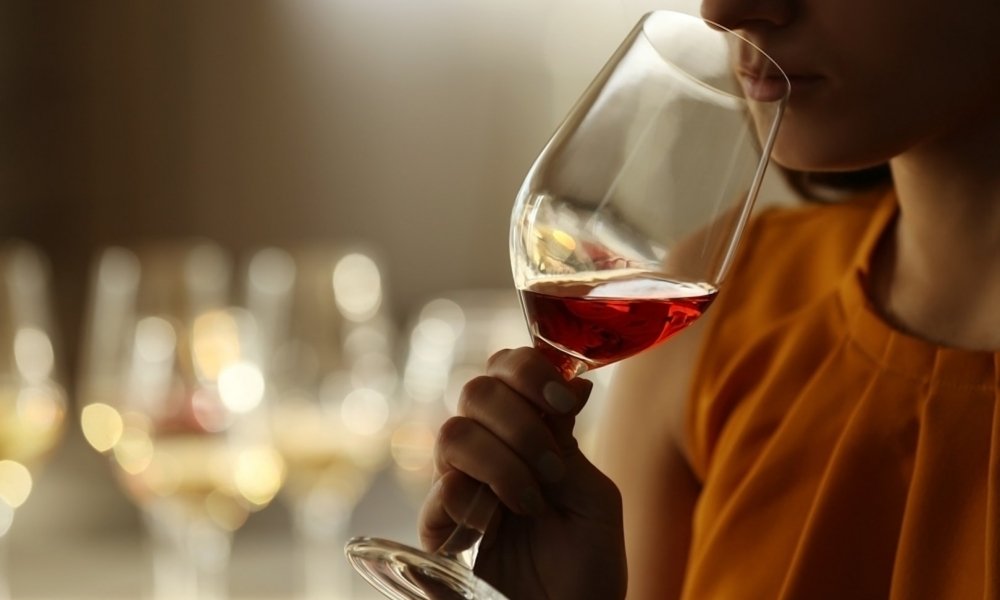Are you an oenophile, a wine connoisseur, a restaurant owner, a waiter, or love wine?
The following article will give you more information about wine aromas, their origins, when they appear or are created, their categories, and their role in wine.
WINE AROMAS
The aromas of the wine are natural, not added as some people believe. They derive from:
- the grape variety (each variety has its aromatic characteristics).
- the “terroir” (the soil, subsoil, slope and soil exposure, row orientation, technology, etc.)
- the complex fermentation process (vinification)
- the storage and ageing:
– if a wine is left for some time in oak barrels, it will acquire distinct aromas such as wood, vanilla, and “oxidised aromas” due to the micro-oxygenation it receives through the wood pores.
– if the wine is left in a bottle, it will have reductive aromas due to the lack of oxygen in the bottle.
ORIGIN OF WINE AROMAS
PRIMARY AROMAS: (They come from the soil and the grape variety)
They include fruity, floral, and herbal aromas and derive mainly from the grape variety.
SECONDARY AROMAS: (They come from the complex process of fermentation).
The aromas of fermentation smell like cream, bread, mushroom, or butter.
TERTIARY AROMAS: (come from the oxidation and reduction during maturation and ageing in barrels or the bottle)
Aromas that derive from maturation and oxidation include those of vanilla, walnuts and nuts, coffee, and tobacco.
POSITIVE AROMAS: Fruity / Floral / Spicy / Herbal / Caramelized/ Woody
NEGATIVE AROMAS: Chemical / Bitter-hot/Derived from microbial spoilage
We never add aromas to the wine.
Positive aromas:
Fruity: (lemon, grapefruit, raspberry, redcurrant, strawberry, prune)
Floral: (violet, jasmine, elderflower)
Vegetal/Herbal: (freshly cut grass, green and red pepper, eucalyptus, green beans, olives, asparagus, artichoke, straw, hay, tea)
Spicy: (liquorice, dill, black & white pepper, cloves, cinnamon, mint)
Nutty: (walnut, hazelnut, almonds, dates)
Caramelised: (honey, butter, nougat, chocolate)
Woody: (vanilla, cedar, oak, smoke, smoked, toasted, coffee, leather, tar, oil, rubber-caoutchouc)
Negative aromas:
Earthy: (dusty, mushrooms, sweat, corky)
Chemical: Tar (unless it’s Syrah), Petrol (unless it’s Riesling), Geranium-associated with the lactic acid bacterial (LAB) decomposition of sorbic acid used in winemaking, garlic, onion, wet wool, wet dog, wet cardboard, acetic acid, nail polish remover, fish oil.
Bitter/hot :(alcohol, methanol)
Oxidised: acetaldehyde, rotten apple, vinegar, glue, soap, Sherry – (acceptable if Sherry-)
Derived from microbial spoilage: alcohol, methanol, flor (unless it’s Sherry), lees (unless it is Champagne or has undergone the Sur-Lie process), pickled cabbage, sweat, lactic acid, horse, mouse.
Conclusion:
The olfactory examination is the most interesting, fascinating stage in wine evaluation. Wine aromas are not only detected by the nose but also by the palate, which, combined with the four basic tastes, create a myriad of impressive aromas that every oenophile is called upon to recognise. To make this possible, in addition to the sensory skills of each Connoisseur, it is essential to have a robust database that can only be acquired through experience and constant practice.
Dr Andreas Emmanouel

